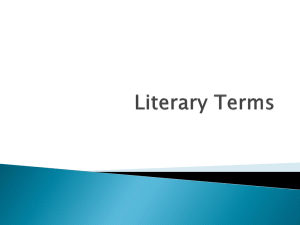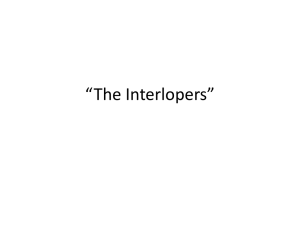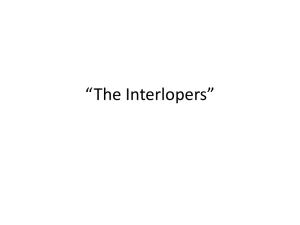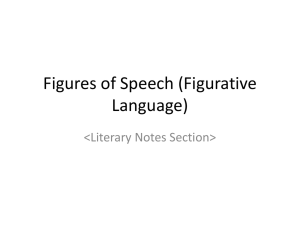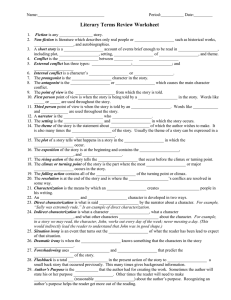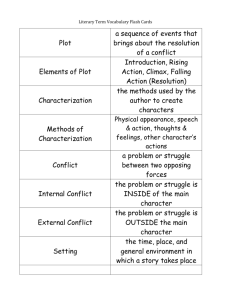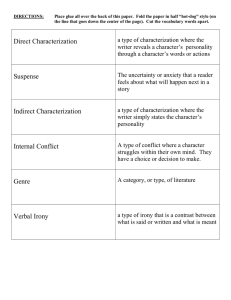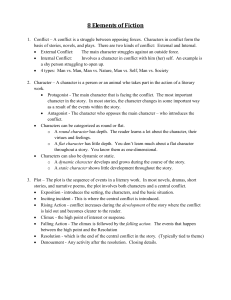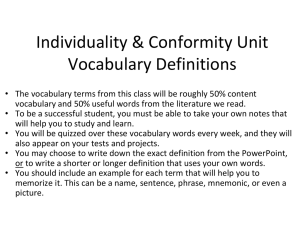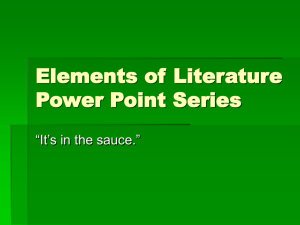Short Story Jeopardy
advertisement
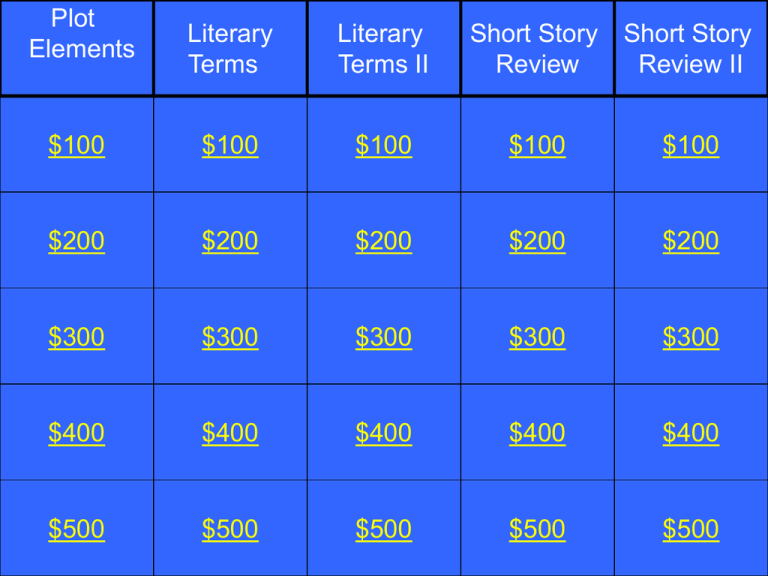
Plot Elements Literary Terms Literary Terms II Short Story Review Short Story Review II $100 $100 $100 $100 $100 $200 $200 $200 $200 $200 $300 $300 $300 $300 $300 $400 $400 $400 $400 $400 $500 $500 $500 $500 $500 Exposition, rising action, climax, falling action, and the resolution make up this of a story. Category 1: $100: A Plot Category 1: $100: Q This is the beginning of the story where the reader is made aware of the story’s important characters, setting, complications, etc. Category 1: $200: A Exposition Category 1: $200: Q This part of a story is the greatest moment of intensity. This can also be called a turning point. Category 1: $300: A Climax Category 1: $300: Q This is the part of the story where the reader is made aware of the outcome. Category 1: $400: A Resolution Category 1: $400: Q In this part of the story, the reader becomes more familiar with the conflicts and complications of the story. Category 1: $500: A Rising Action Category 1: $500: Q This term means the time and place in which a story occurs. Category 2: $100: A Setting Category 2: $100: Q This person writes the story but is not necessarily the narrator of the story. Category 2: $200: A Author Category 2: $200: Q This is a tool the author uses to reveal the personality traits of certain characters. Category 2: $300: A Characterization Category 2: $300: Q All stories have this and it tries to teach the readers a certain message. It is usually stated in a general statement about life. Category 2: $400: A Theme Category 2: $400: Q This terms means a contrast or discrepancy between appearances and reality. Category 2: $500: A Irony Category 2: $500: Q This type of conflict occurs within a character’s self or whithin his mind. Category 3: $100: A Internal Conflict Category 3: $100: Q In this type of irony, a situation does not end the way many believe it should have. Category 3: $200: A Situational Irony Category 3: $200: Q Man v. Man, Man v. Society, and Man v. Nature are all examples of what type of conflict? Category 3: $300: A External Conflict Category 3: $300: Q In this type of irony, the reader or audience is aware of something a character is not. Category 3: $400: A Dramatic Irony Category 3: $400: Q This type of characterization can be seen through the character’s appearance, thoughts, speech, and also other characters’ reactions to that specific character. Category 3: $500: A Indirect Characterization Category 3: $500: Q What is the setting of “The Most Dangerous Game”? Category 4: $100: A Ship Trap Island Category 4: $100: Q This is what the king uses in “The Lady or The Tiger?” in order to determine someone’s guilt or innocense. Category 4: $200: A Fate or Chance Category 4: $200: Q In “The Scarlet Ibis,” this is the type of character that both Doodle and the narrator represent. Category 4: $300: A Round Category 4: $300: Q This is the reason Zaroff claims that he likes to hunt humans instead of animals. Category 4: $400: A They are able to reason Category 4: $400: Q This is the reason that Ulrich is in the forest to begin with in the story “The Interlopers.” Category 4: $500: A Protecting his land from the neighboring poachers Category 4: $500: Q Why are Ulrich and Georg fighting in “The Interlopers”? Category 5: $100: A They each believe that the land belongs to them. Category 5: $100: Q What is Doodle’s real name? Category 5: $200: A William Armstrong Category 5: $200: Q What does Montresor’s family crest and motto say about him? Category 5: $300: A He will seek revenge. Category 5: $300: Q Which character in “The Scarlet Ibis” goes through a character arc? Category 5: $400: A The narrator Category 5: $400: Q In “The Lady or the Tiger” What is the king trying to determine by having “criminals” choose between the two doors? Category 5: $500: A Guilt or innocence Category 5: $500: Q


